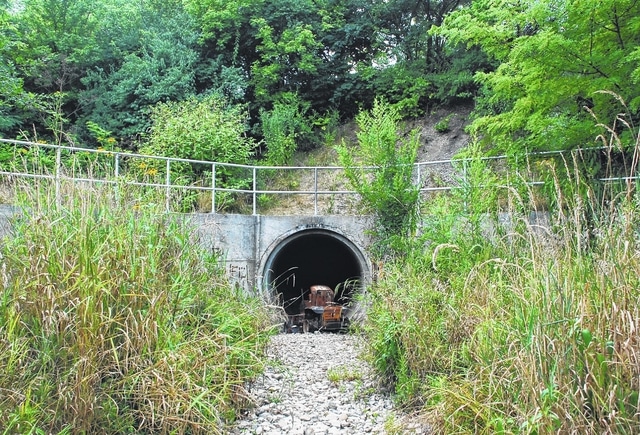
At various times throughout the past decade, city of Urbana officials have tossed around the idea of implementing a stormwater utility fee to help maintain and improve the city’s aging system, but City Council has yet to approve such a measure.
Last month, council decided to revisit the matter and approved a resolution establishing a group – the Stormwater Advisory Committee – to take a closer look at whether a stormwater utility fee is feasible and warranted.
As outlined in the resolution, the volunteer committee will consist of any interested city residents, at least one council member, city Engineer Tyler Bumbalough and Wastewater Superintendent Chad Hall.
“Essentially, we are looking for participation from not only residents, but also entities, businesses and manufacturers,” Community Development Manager Doug Crabill said. “We are hoping to get some kind of a cross-section of people to participate in the process. For instance, we want some residential participation, but we also want to capture some of the ones which would have more impervious areas like county government, the university, and the school district, which would mean they would potentially have a larger fee to pay than a typical homeowner would.”
The committee’s first meeting is scheduled for 7 p.m. on Aug. 29 in the municipal building’s upstairs fire training room.
Crabill said the first meeting will allow city staff a chance to provide information to the committee as to why a stormwater utility is being looked at and what information has been gathered to date as it relates to the topic.
“We’ve met with the city of Springfield and the city of Piqua (both charge a stormwater fee),” he said. “We’ve looked at a lot of different models and a lot of different ways of doing it.”
Following the first Stormwater Advisory Committee meeting on Aug. 29, the group will have three months to research and debate the pros and cons of a stormwater utility before its recommendation is due to council on Nov. 30.
“I think the goal is to have the committee either say a stormwater utility doesn’t make sense or come up with something that is reasonable and workable for the community,” Crabill said.
Anyone interested in serving on the committee is asked to call the Water Reclamation Facility at 937-652-4331.
Funding, current condition of storm sewer system
Consisting of over 40 miles of pipe, the city’s storm sewer system, according to Bumbalough, is not only aging, but is nonexistent in various areas throughout the city.
“I’d say more than half of the lines are over 50 years old, and in engineering, we estimate the useful life of a storm pipe is usually about 50 years. When we have over half our system past its useful life, we are going to have some problems,” Bumbalough added.
A recently completed inventory shows the city’s storm sewer system consists of approximately 42 miles of storm lines, 1,479 catch basins and 488 storm sewer manholes.
The storm sewer system, Crabill said, is like the majority of infrastructure around the city that tends to go unnoticed by residents as long as it’s doing the job.
“People don’t think about it until it breaks, but it is there – aging more and more every day,” he said.
Throughout the years, more and more residents are beginning to take notice.
“We have calls each year when we get heavy rains about local areas that have flooded, but we aren’t able to address those right now without more funding,” Bumbalough said.
While water and sanitary sewer have their own separate funds, the same can’t be said about the storm sewer system, which is the reason a stormwater utility is being discussed once again.
“Any stormwater infrastructure we have, which we have a lot of it, doesn’t have a designated funding source,” Crabill said. “It comes out of the General Fund.”
Hall added while capital expenses related to stormwater infrastructure come from the General Fund, all operating and maintenance costs are funded using street and sanitary sewer dollars.
Past, future stormwater projects
Between fall 2009 and summer 2015, eight storm sewer-related projects were completed in the city at a total cost of $2,116,521.89. Twenty percent or $422,474.64 of the total cost of the projects was footed by city taxpayers.
The four costliest projects were completed between fall 2009 and spring 2012. These projects all exceeded $310,000 and involved the following streets, all located around Dugan Ditch: Bloomfield Avenue, Maple Tree Lane, North Russell Street, North Main Street, West Ward and North Julia Street.
“Yes, we still have localized issues, but I think we’ve done a good job controlling storm sewer issues,” Hall said.
Bumbalough added, “There are quite a few areas in town that don’t have dedicated stormwater systems.”
Next summer, one of those areas – the east side of Urbana from Berwick Drive to Lippincott Lane (Walmart) – will get storm sewer infrastructure as part of the U.S. Route 36 East Improvements Project. The $461,000-plus project is being funded through a $400,000 Ohio Public Works Commission grant and a local match of $61,602.42.
As for future storm sewer system improvements beyond summer 2017, the city’s wish list of sorts currently contains the following five unfunded projects: Railroad Street Storm Project (Union Alley to Pindar Street), Railroad Street Storm Project (West Light Street to Pindar Street), Boyce Street Culvert Replacement, Henry Street Storm Improvements and the North Drive/Westview Drive/West Light Street Storm Project.
“The northwest neighborhood is the focus of our next couple projects,” Bumbalough said. “They have a deficiency in storm lines.”
Hall cautioned that all future projects are dependent on available funding.
“We can build anything,” he said. “The issue is figuring out how you are going to pay for it.”


